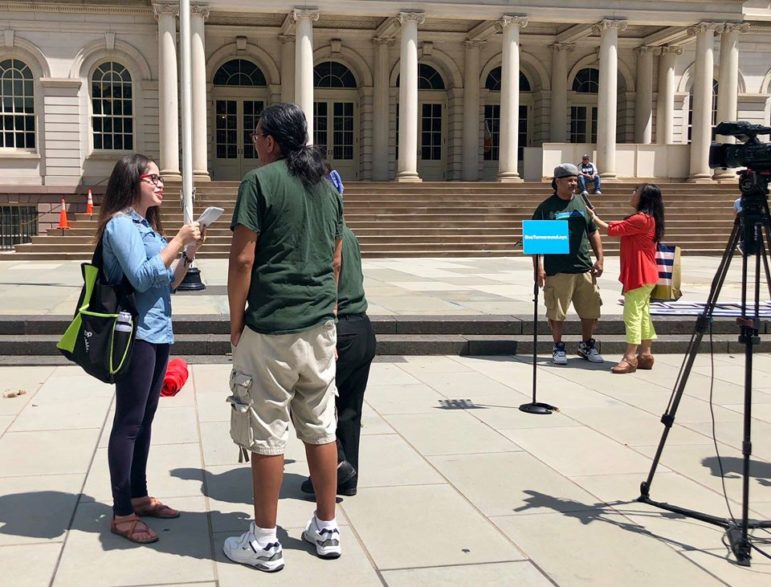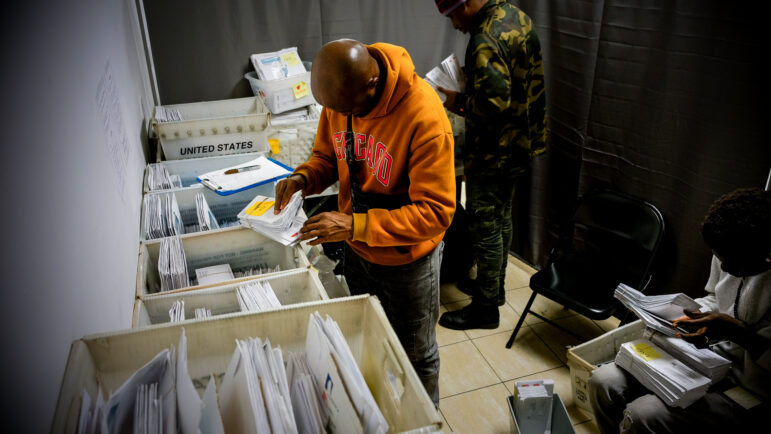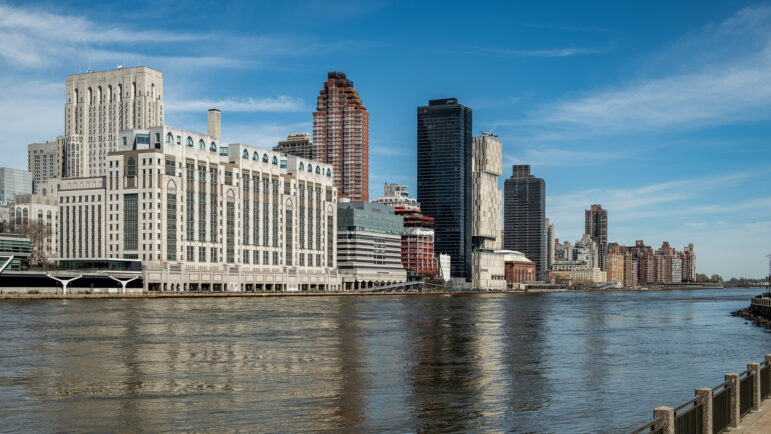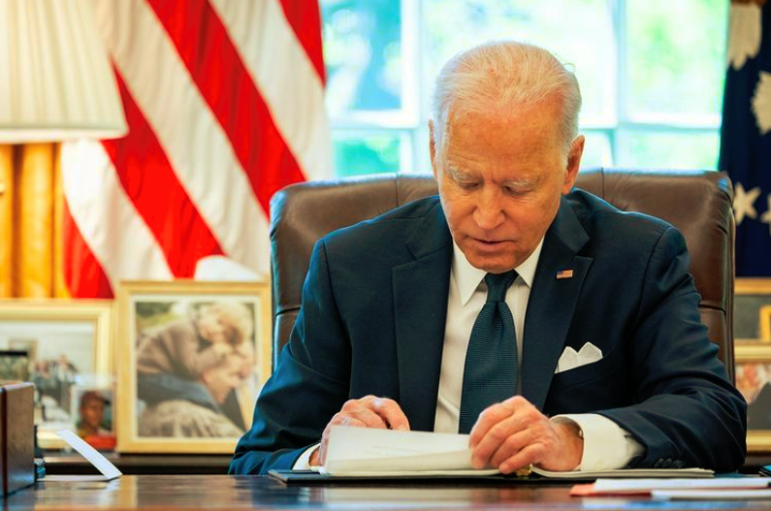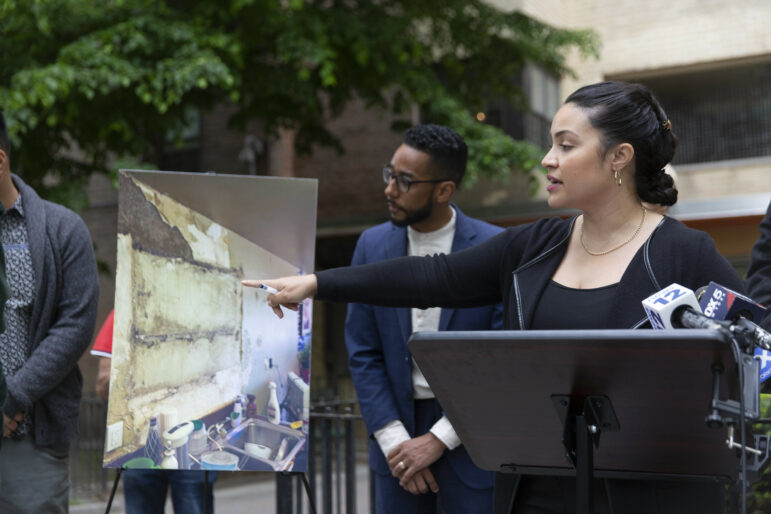IN WILLIAMSBURG, Brooklyn, Hasidic, Latino and African-American residents are locked in a ferocious battle for living space. Yet 12 acres on the border between East Williamsburg and Bushwick stand empty, save for barbed-wire fences and tangled weeds. The flat, bare land looks tantalizingly easy to build homes on, but the problem is what lies beneath. The soil contains a toxic mix of chemical pollutants that seeped underground during the neighborhood’s manufacturing days.
There are an estimated 7,000 plots like this across New York City–contaminated by industry and scattered mainly in economically depressed parts of the boroughs. These brownfields can sit festering and vacant for decades because the cost of assessing, cleaning and insuring an environmentally degraded site simply overwhelms the value of any potential development.
A long-awaited state law, the 2003 Brownfield Cleanup Program, is supposed to change all that. “Our focus was enhancing environmental protections and public health,” says the legislation’s lead sponsor, State Assemblymember Tom DiNapoli. “Related to that purpose is showing there is a way to have a rigorous environmental program that succeeds from the economic point of view. We want to create opportunities for putting nonproductive properties back to productive use.”
But nine months since the program’s launch, New York City’s applications are primarily being filed by big developers doing expensive projects on sites that have been in continuous use, are likely to have mild if any toxic contamination, and indeed were already being developed before the law was signed. One application came from Forest City Ratner and its partner the New York Times Company for its $850 million headquarters in Times Square. Another brownfield application was filed by the Related Companies, for its plan to turn the 34-acre Bronx Terminal Market into a $300 million retail center.
It’s no mystery what’s attracting titans of the building industry to the new brownfield program: tax credits. Big ones. “There is no limit on the number of projects, the amount of money to be expended, and no cap on the amount given to any one project,” enthuses Kelly Bennett, associate executive director of the Environmental Business Association, a New York State trade group for green industry. “These are the most powerful tax credits we have on the books right now.”
Of the 23 states that offer tax abatements or credits as part of a brownfield cleanup program, New York’s are the most generous to developers. In addition to giving a tax credit tied to the cost of environmental cleanup, New York also gives builders a tax break for a percentage of the cost of redevelopment–as high as 22 percent. The Times-Ratner project alone could get more than $170 million. If the credit amounts to more than what the developer owes in state income tax, New York State will pay the difference in a rebate check.
To get into the brownfield program, a builder has to convince the Department of Environmental Conservation (DEC) that “redevelopment or reuse [of the site] may be complicated by the presence or potential presence of a hazardous waste, petroleum, pollutant or contaminant.” Even if subsequent testing shows no contamination, the project can keep the entire tax break. It is up to the DEC to decide eligibility on a case-by-case basis, and so far the agency seems inclined to err on the side of inclusion.
“It is a fairly broad definition,” agrees lawyer Michael Gerrard, who chairs the American Bar Association’s environment section and has written several books on brownfield law. “But it was written intentionally broad to encourage property owners to enter the program and encourage the redevelopment of brownfields.”
While offering generous, easy-to-access tax credits may be an effective way to get businesses to participate, some environmentalists who fought for the brownfield law are beginning to worry that these financial incentives will not end up serving the intended purpose of the program: spurring developers to put polluted, deserted real estate back into use. The tax credits are structured to give the maximum payout on pricey projects in areas where the real estate market is already strong, rather than steering developers to deeply contaminated sites in environmentally burdened neighborhoods.
“It was not my intention to include projects like the Times-Ratner building,” says Assemblymember Vito Lopez, who cosponsored the Assembly’s brownfield bill and whose district includes the Bushwick site. “It wasn’t about projects that could afford to underwrite the costs of remediation. My intention was that this would get us out and able to do projects that wouldn’t have been done anyway.”
Some observers are also concerned that the use of the brownfield tax break as a subsidy for high-end development could put the entire program in jeopardy. The state budget office estimated that these tax credits would cost $135 million in forgone revenue this year. However, there is no ceiling on how much the state can pay out in tax credits. A tax break costing indebted New York State hundreds of millions of dollars each year–and benefiting deep-pocketed real estate and business interests–may prove politically unsustainable. “Long term, if too many sites enter with a low cleanup value but high tax credits, that’s not good for the state,” says Linda Shaw, a Rochester environmental attorney who worked on the brownfield law. “If you abuse a program like this, it won’t get renewed.”
Mathy Stanislaus, who was also involved in developing the legislation as a representative of the New York City Environmental Justice Alliance, shares Shaw’s apprehension. “Although it would be a huge mistake to eliminate a program simply because the legislature didn’t get it right the first time,” says Stanislaus, “it’s possible.”
“I’ve tried to figure out how the tax credits got crafted,” adds Stanislaus, “and no one has given me a straight answer.”
_______
NEW YORK STATE’S first comprehensive brownfield bill was unanimously passed by the Assembly in 1996, but it took another seven years and dozens of failed proposals to get a bill that could pass the Senate and be signed by the governor. Assembly Democrats and Senate Republicans had been deeply divided over the essential environmental and economic goals for a brownfield program.
What’s more, the environmental community itself was locked in a bitter fight. Backed by influential organizations, including the Sierra Club, Natural Resources Defense Council and NYPIRG, assemblymembers on the environment committee argued vociferously that cleanup standards had to be as stringent as possible to protect soil, air, water supplies and public health.
Other New York-based organizations, including Environmental Advocates, Environmental Justice Alliance and Pratt Institute Center for Community and Environmental Development (PICCED), argued for more flexible cleanup standards, depending on the end use of the site. Their objective was to lower the costs of remediation and draw more investment to poorer communities.
“It was a bloody, bloody battle among the advocates,” recalls Laura Haight, senior environmental associate with NYPIRG. “The people holding the line on cleanup standards were seen as obstructionists because the priority of the environmental justice groups was redevelopment, but the people wanting to see blighted areas revitalized seemed less interested in getting toxic waste cleaned up.” Ultimately, the Assembly came to push for stricter environmental standards than most states, but to let the standards vary according to what any given site would ultimately be used for.
On the Senate side, the main appeal of a brownfield law was as a tool for economic development, particularly in regions upstate that have large contaminated sites and a need for new corporate investment. “We are in a serious competition with other states for new commercial and industrial facilities,” says Shaw. One way to get new businesses to move here, she explains, is for the state to cover some costs of developing facilities on brownfields.
The breakthrough finally came last year, with the dramatic Albany budget showdown that transformed the state Senate, usually an ally of Governor Pataki’s, into an aggressive opponent. Last March, partly to spite the governor and partly to draw development to his brownfield-littered district in Rensselaer County, Senate Majority Leader Joseph Bruno authorized the chair of his environment committee to draft a compromise bill. “When the Senate broke from the governor’s position for the first time and came up with their own proposal, it created an opportunity,” recalls John Stouffer, legislative director for the Sierra Club’s Atlantic chapter.
Negotiations kicked into high gear. All the environmental interests, business lobbyists and developers were sent out of the room, while the Assembly, Senate and governor’s staffs hunkered down to hash out the details.
In Albany, legislation is frequently written at the last minute, and in many pieces, so that rarely can anyone review the entire package until it comes up for a vote. In the case of brownfields, the tax credit portion and the environmental section were written in separate rooms, by distinct groups. Much of it was still being haggled over and drafted the night before it passed, and no outside experts had the opportunity to vet the tax plan. Says Stouffer, “The first time we saw the full program was when it was done.”
_______
EVEN AS MEGAPROJECT developers buzz around the new tax break, the brownfield program is unlikely to spark redevelopment badly needed in New York City’s neighborhoods, say environmental advocates and community-based builders. “Most developers aren’t going to go through the risk and time to clean up a 5,000-square-foot lot in Sunset Park,” notes Joan Byron, an architect at PICCED who advocated alongside Stanislaus to target the program to disinvested neighborhoods. “I don’t think there is anything in the law strong enough to stimulate investment in low-income communities.”
Some proponents of the brownfield bill, however, remain optimistic that projects in low-income areas can be encouraged under the law. Assemblymember Lopez has high hopes for the Brownfield Opportunities Area program, which gives grants to community-based organizations to study where remediation and development is most needed in their communities and to identify private developers. “I don’t have anyone in my area doing this yet,” Lopez says. “I think the word is not out yet among nonprofits. But I believe it could work in the outer boroughs and places that need help underwriting assessment.”
Most business and industry supporters of the bill assert full confidence in DEC’s ability to prevent the tax credits from being misused. “The burden is on the agency to administer according to the spirit of the law,” says Bennett from Environmental Business Associates. “There is a commitment on the state level to making sure the program evolves the way people intended, and the intent is not to let in huge tracts with a tiny bit of contamination.”
The DEC has already approved two of the applications from New York City developers and given every indication that it will continue to admit big-ticket projects. The final regulations governing the DEC are not yet in place, but Dale Desnoyer, chief administrator of the program, says, “If there is contamination or likely to be contamination, [sites] will probably be eligible.” •


